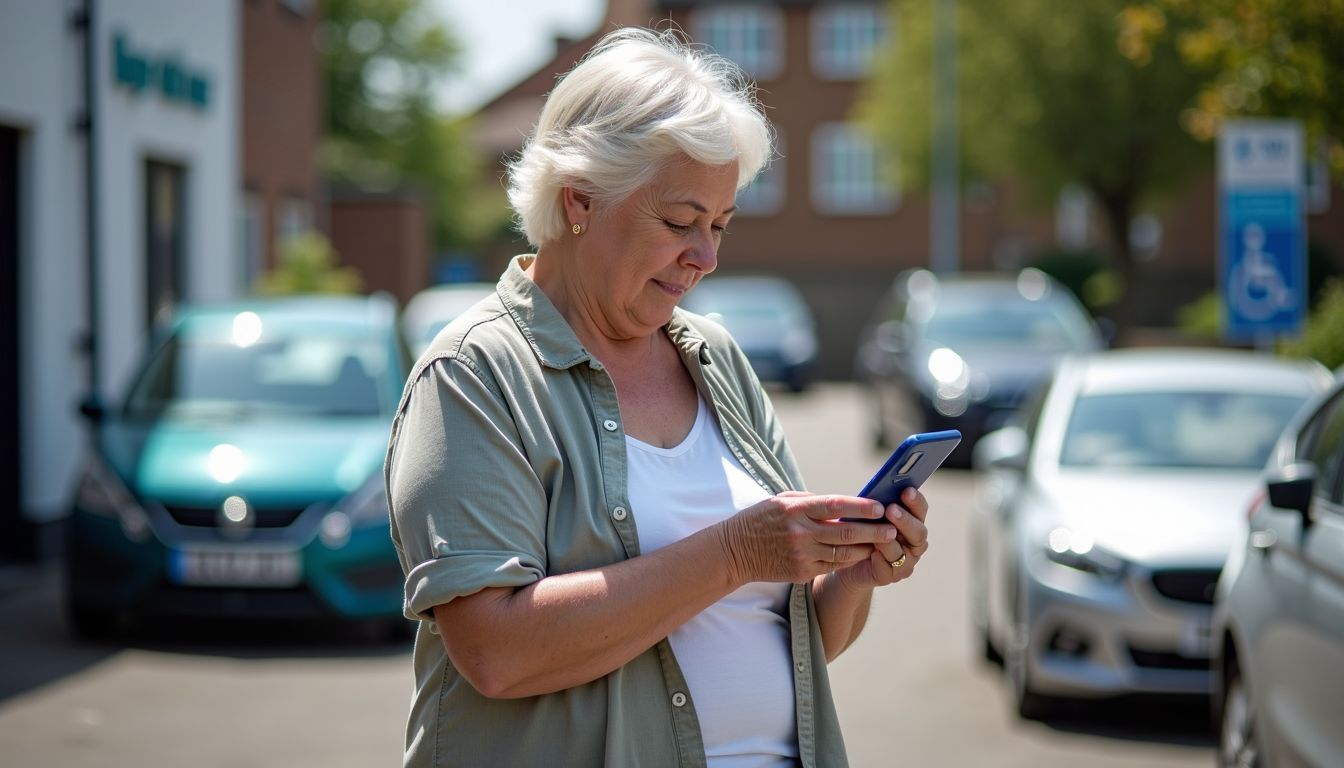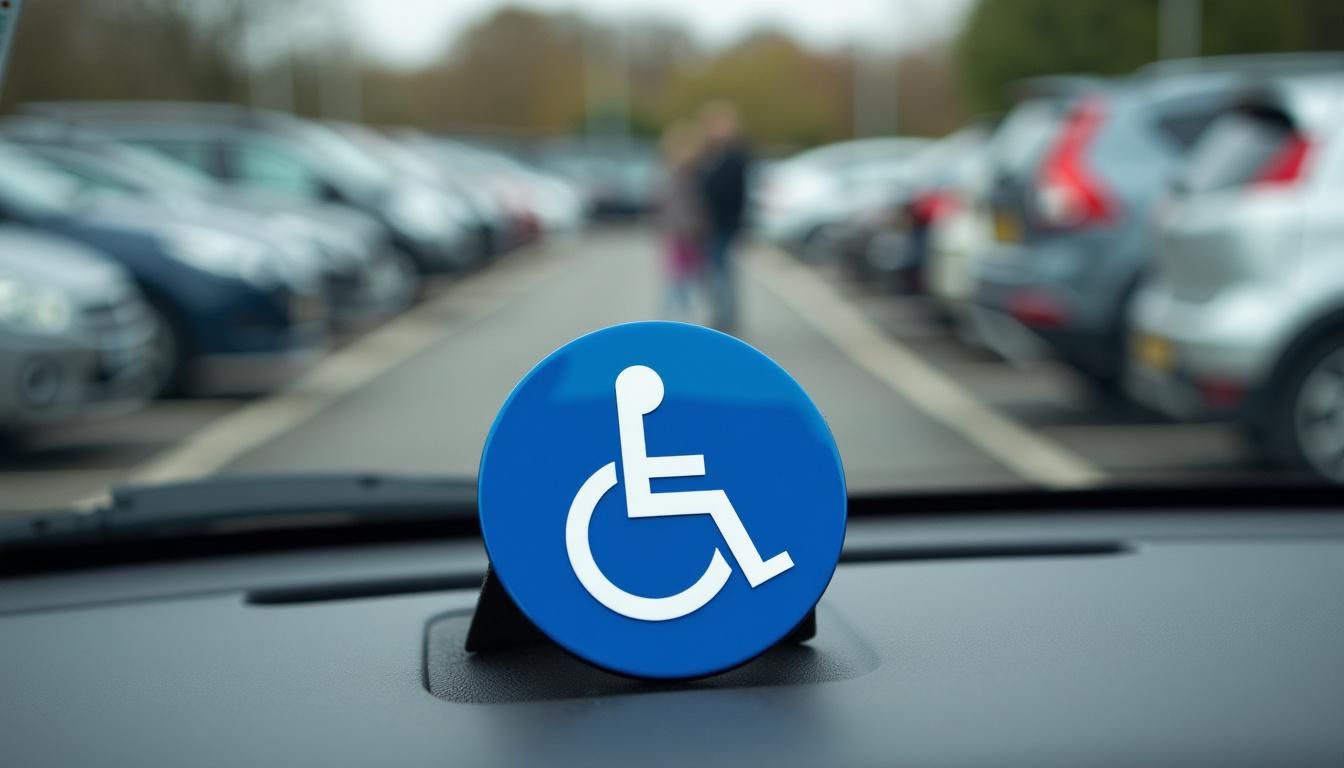Blue Badge Responsibilities: What Every Holder Should Know
Are you unsure about your Blue Badge holder responsibilities and obligations? Many people find the rules confusing. Blue Badges help disabled people park closer to their destinations.
This guide will explain your duties as a badge holder. Read on to learn how to use your Blue Badge properly.
Key Responsibilities of a Blue Badge Holder

Blue Badge holders have key duties to follow. These duties help keep the system fair for all users.
Proper display of the badge
Displaying your Blue Badge correctly is vital. You must put it on the dashboard or facia of your car. Make sure the front of the badge faces up. This lets traffic wardens see it easily.
The badge should show your photo and number clearly.
Wrong display can lead to a penalty charge notice. You might even face prosecution for misuse. Always check that your badge is visible before you leave your car. Next, let’s look at who can use the badge.
Ensuring only the designated user employs the badge
After proper display, it’s vital to use the Blue Badge correctly. The badge belongs to one person only. It’s not for friends or family to use. The badge holder must be present when the badge is used.
This rule helps keep the system fair for all disabled people.
Misuse of a Blue Badge is against the law. It can lead to fines and the loss of the badge. The police and local councils check for proper use. They may ask to see the badge and the holder’s ID.
Badge holders should always carry their ID when using their badge. This helps prove they are the right user.
Reporting changes in circumstances
While only the badge holder should use the Blue Badge, they must also report any changes. Life can shift quickly. A move to a new home or a change in health status needs swift action.
The Driver and Vehicle Licensing Agency (DVLA) must know about these updates.
Badge holders should inform their local council of any big changes. This keeps the system fair and helps those who truly need it. Quick reporting ensures the badge stays valid. It also helps avoid any legal issues down the line.
Proper use of the Blue Badge system helps everyone access services more easily.
Usage Guidelines for Blue Badge Holders
Blue Badge holders must follow key rules when using their badge. These rules help ensure fair use and keep the system working well for all disabled drivers.
Using a parking clock when necessary
Parking clocks help Blue Badge holders follow time limits. Some spots need these clocks to show when you parked. Put the clock on your dash next to your badge. Set it to show when you arrived.
This helps traffic wardens check if you’ve stayed too long.
Badge holders must know where they can park. Some areas have special rules. You can’t park on yellow lines in some spots. But you can park in disabled bays and pay-and-display spots.
Always check local signs before you leave your car. This stops you from getting a fine or causing road problems.
Understanding where the badge permits parking
Blue Badge holders can park in many spots. They can use disabled bays on streets and in car parks. These bays are often closer to shops and services. Badge holders can also park on single or double yellow lines for up to three hours.
But they must not block roads or cause danger.
Some places have special rules for Blue Badge users. In London, badge holders can park for free in pay-and-display bays. They can also use some residents’ parking zones. But they must check local signs first.
Blue Badge holders can’t park on red routes or clearways. They also can’t use bus lanes or cycle tracks. It’s vital to know these rules to avoid fines.
Adherence to specific local parking restrictions
Local parking rules can differ from place to place. Badge holders must know these rules. Some areas have time limits for disabled parking. Others may not allow parking at all. It’s vital to check signs and follow local rules.
This helps keep spaces free for those who need them most.
Badge holders should always use their permit properly. They can park in disabled bays and some restricted areas. But they must still follow traffic laws. Misuse of the badge can lead to fines or even losing the permit.
Proper use ensures the scheme works well for everyone who needs it.
Legal Obligations
Blue Badge holders must follow certain legal rules. These rules keep the system fair for everyone. Want to know more about your legal duties? Keep reading!
Reporting a lost or stolen badge
If you lose your Blue Badge or someone steals it, you must act fast. Tell your local council right away. They need to know so they can stop others from using your badge. This helps fight fraud and keeps the system fair for all users.
You may need to fill out a form to report the loss. The council will likely ask for details about when and where you last saw your badge. They might also want to know if you think someone took it on purpose.
After you report it, the council can give you a new badge if you still need one.
Returning the badge when no longer eligible
Blue Badge holders must return their badge when they no longer need it. This rule helps keep the system fair for everyone. The badge belongs to the council, not the person. Holders should send it back if they move house or can’t use it anymore.
They must also return it if the badge expires or gets damaged.
Giving back the badge is a legal duty. Failing to do so could lead to fines or other penalties. The council needs to know when people stop using their badges. This helps them give badges to others who need them.
It’s vital to follow the rules and return the badge when the time comes.
Vehicle tax exemption processes
Blue Badge holders can get free vehicle tax. To do this, they must show their badge when they tax their car. They can do this online, at a post office, or by phone. The tax office will check if the badge is valid.
If it is, they will give the tax disc for free.
The process is easy. Badge holders need their badge number and details. They also need their V5C log book and MOT certificate. Once they have these, they can apply for the tax. The free tax lasts as long as the Blue Badge is valid.
Badge holders must renew it when their badge expires.
Rights and Benefits
Blue Badge holders enjoy perks beyond parking. They can save money on tolls and airport charges. These benefits make travel easier for people with mobility issues.
Exemptions on road systems at airports
Blue Badge holders enjoy special perks at airports. They can use road systems without paying fees. This includes access to drop-off and pick-up zones near terminals. Badge holders don’t need to pay for short-stay parking in these areas.
They can also park for free in some airport car parks.
These rules may differ at each airport. It’s best to check with the airport before you travel. Some may ask you to show your Blue Badge when you enter. Others might need you to register first.
Next, let’s look at toll concessions for Blue Badge holders.
Toll concessions
Blue Badge holders can save money on tolls. Many roads and bridges offer lower fees for disabled drivers. This perk helps them travel more easily. Badge owners should check local rules to see where they can get discounts.
Some places may need proof of the badge to give the lower rate.
Toll savings can add up fast for frequent travellers. It’s smart to keep the badge handy when passing through toll areas. Drivers should always follow the rules about using their badge.
Misuse could lead to fines or losing the badge. Proper use ensures everyone can enjoy fair access to roads and services.
Parking in central London
After learning about toll breaks, let’s talk about parking in central London. Blue Badge holders get special parking rights in the city centre. They can park for free in pay-and-display bays.
They also don’t have to pay the Congestion Charge. But, they must sign up with Transport for London first to get this perk.
Badge holders can park in many spots in central London. Yet, they must follow some rules. They should always show their badge clearly. They must also use a parking clock when needed.
It’s vital to know where they can and can’t park. Some areas have special rules, even for Blue Badge users.
Conclusion
Blue Badge holders must know their rights and duties. Proper use of the badge helps everyone. It gives access to key services and makes life easier. Knowing the rules keeps you on the right side of the law.
Stay informed and enjoy the perks of your Blue Badge wisely.
FAQs
1. Can I use my Blue Badge to avoid the London congestion charge?
No. The Blue Badge does not exempt you from the London congestion charge. You must follow road traffic rules and pay the fee.
2. Are there special rules for Blue Badge holders at pedestrian crossings?
Blue Badge holders must obey all rules of the road, including those at pedestrian crossings. Safety is key for all road users.
3. How can I pay for on-street parking with my Blue Badge?
Most on-street parking spots have parking meters. You can often pay with a credit card. Some areas may offer free parking for badge holders.
4. What should I do if I face criminal procedures related to my Blue Badge use?
If you commit offences with your Blue Badge, you may face criminal procedures. Seek legal help right away to understand your rights.
5. Is the Blue Badge website accessible for people who use assistive technology?
Yes, the website is made to work with screen readers and other assistive technology. It uses cookies to improve your experience.

